It’s witch-hunt de novo. The state-run TV drives the wedge deeper into the society
Monitoring of State TV Narratives in Belarus. (14/09/2020 – 20/09/2020)
The purpose of this monitoring is to study how the Belarusian state conveys its ideological narrative. The most important mechanism for conveying its narrative is the evening broadcast. Then the informational function of media is complemented, and sometimes replaced by, the broadcasting of official ideological messages. We monitor the outputs of the Agency of the Television News (ATN), which prepares the news broadcasts for the Belarus-1 channel (“Panorama” and Sunday’s “Main Airtime”), the channel ONT (“Our News”, “Saturday’s Edition” and “Contours”), and the channel STV (“24 Hour News” and “The Week”).
EXECUTIVE SUMMARY
The meeting of Aliaksandr Lukashenka with the political lieutenants on September 16 brought the already declining intensity of the information war to its earlier highs. The main technique was the juxtaposition of the rallies of the supporters of the government — “patriots who are not indifferent to the fate of the country”, and the rallies of its opponents, whose image was persistently reduced to criminal and incomprehensible agenda, not forgetting to emphasize the Western hand in all this.
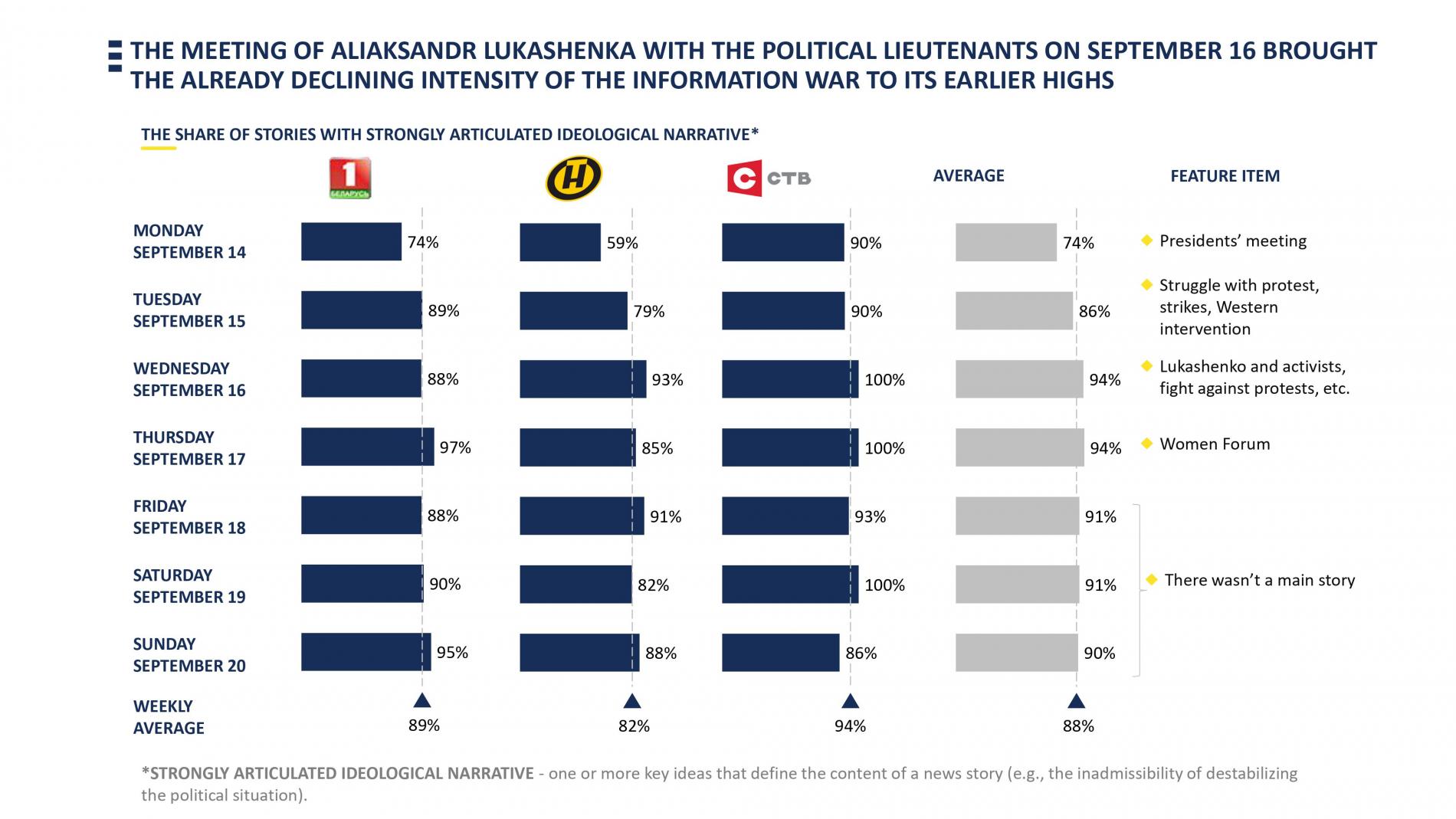
STV can be called the “champion” of ideological influence. This is expressed, in particular, in the numerous editorials for undermining the opponents (comments by Azarenok, Pustovoy, Mukovozchik).
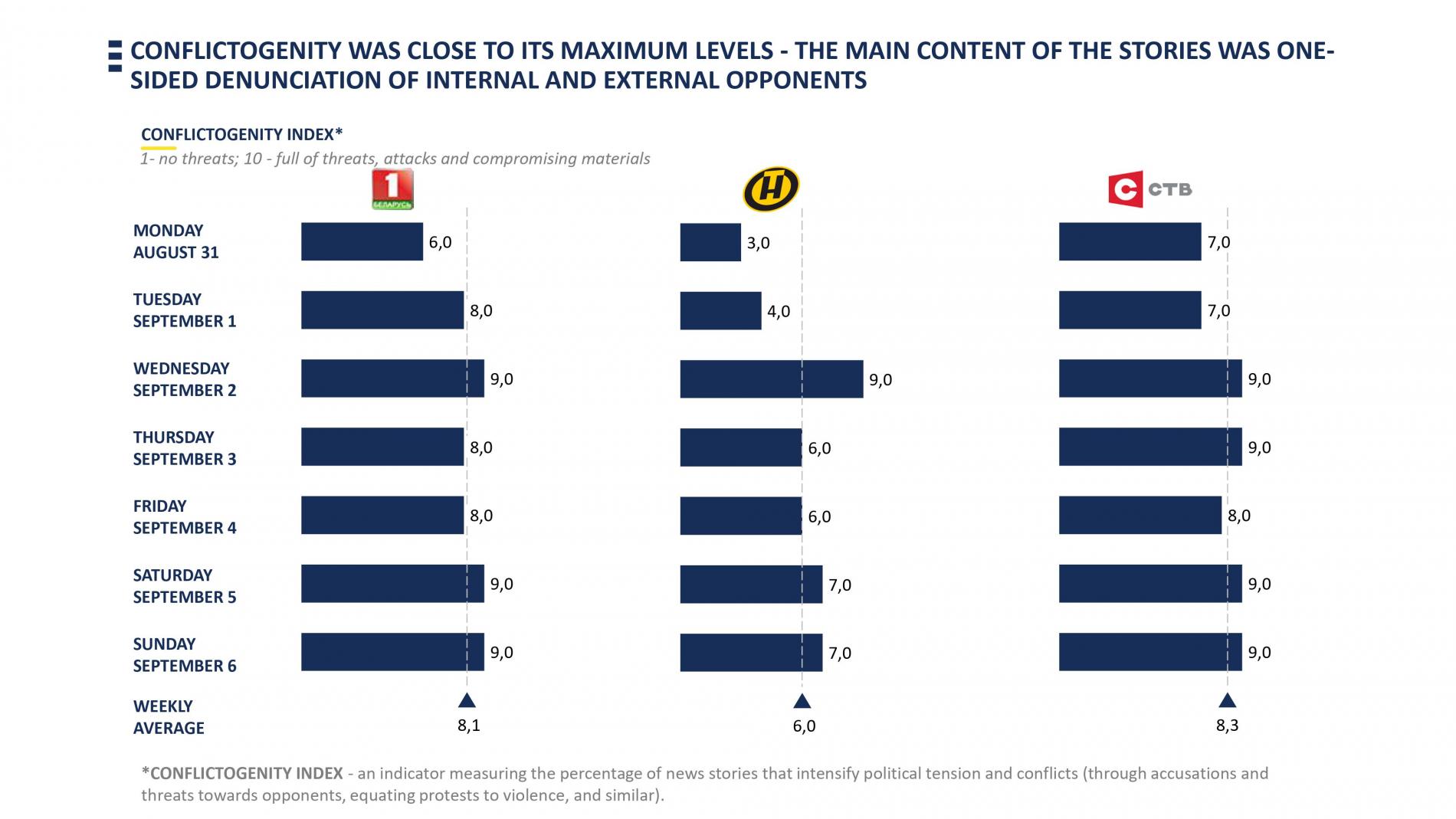
Against the background of the talks in Sochi, Russian support and special relations between the two countries remained an important narrative. State TV channels expressed concern about the likelihood of the protests spilling over from Belarus to Russia.
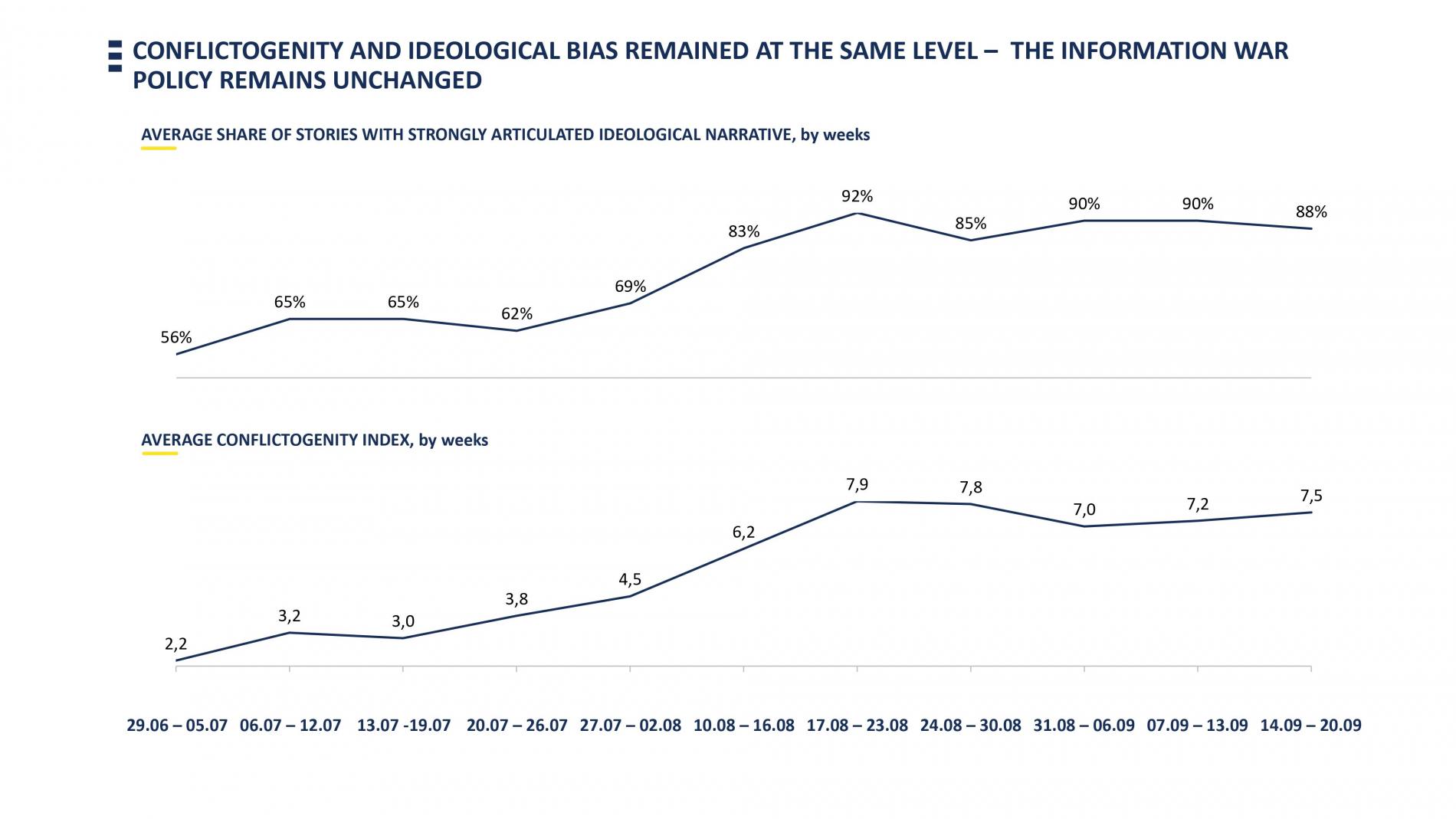
The state-run TV plots highlighted the similarities between protests in different countries, which was presented as evidence of their orchestrated nature. Church leaders who made political statements were also criticized by the state-run TV.
An important role in the anti-Western, especially anti-Polish narratives was played by the anniversary of the beginning of the “liberation campaign of the Red Army”, which resulted in the uniting of Western and Eastern Belarus (September 17). The story of the Hasidic pilgrims stuck on the border was presented as an example of the hospitality of the Belarusian side and, at the same time, was used to criticize Ukraine.
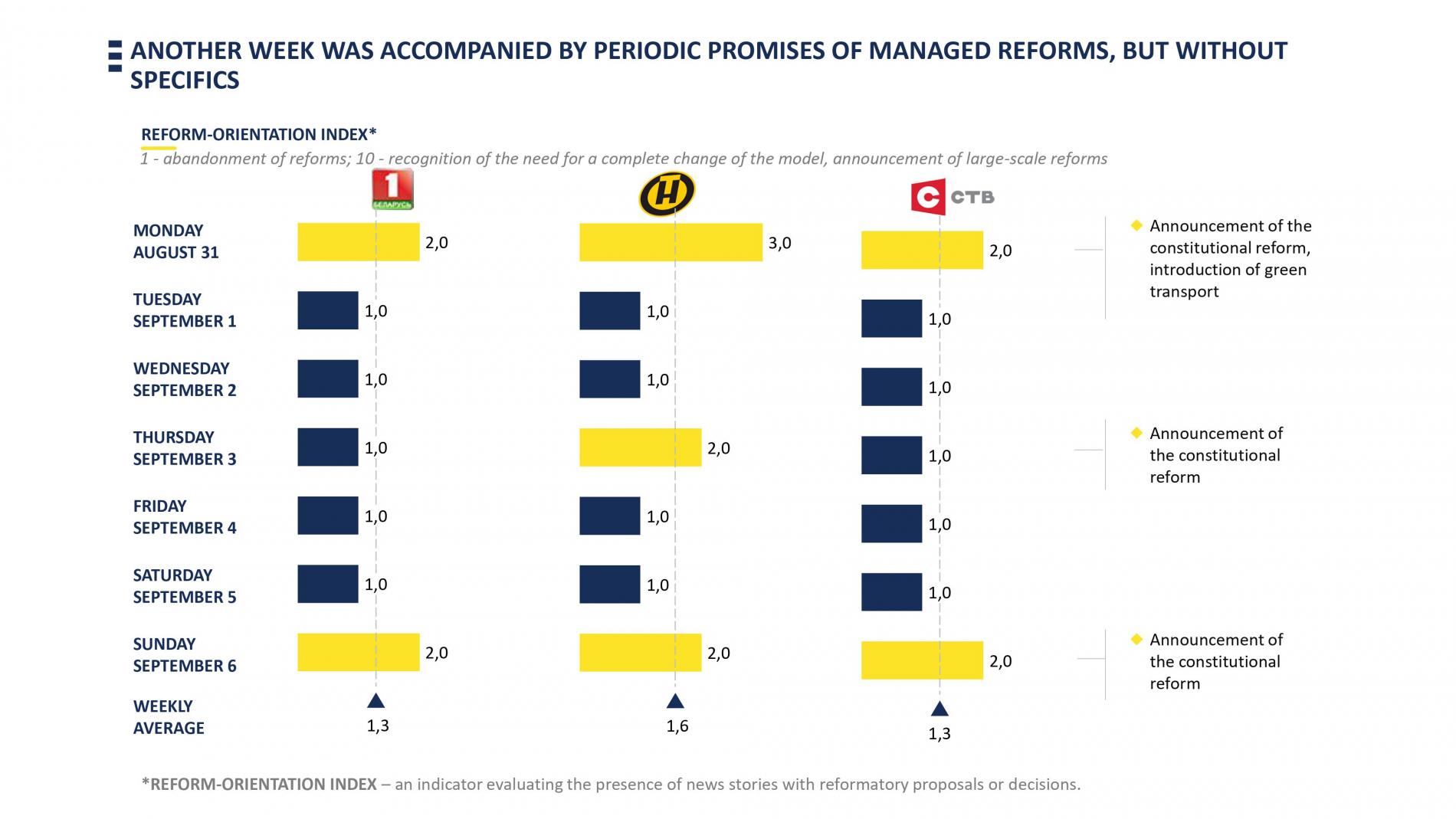
Minimal degree of reformism manifested itself in the announcements of future reforms, but without specific content.
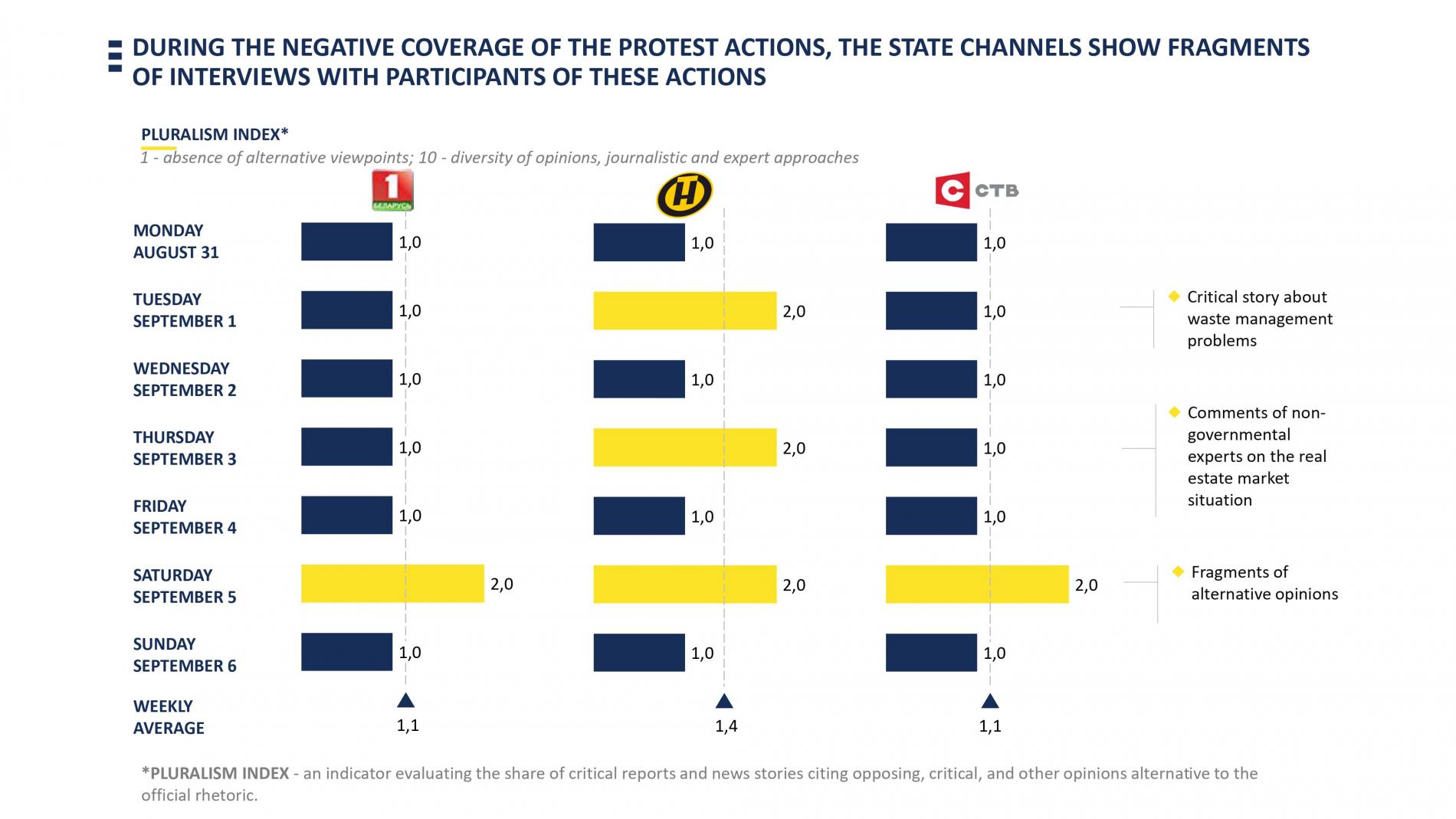
The lack of pluralism and the nearly-maximum level of synchronization of the information agenda of the state-run channels remained unchanged.
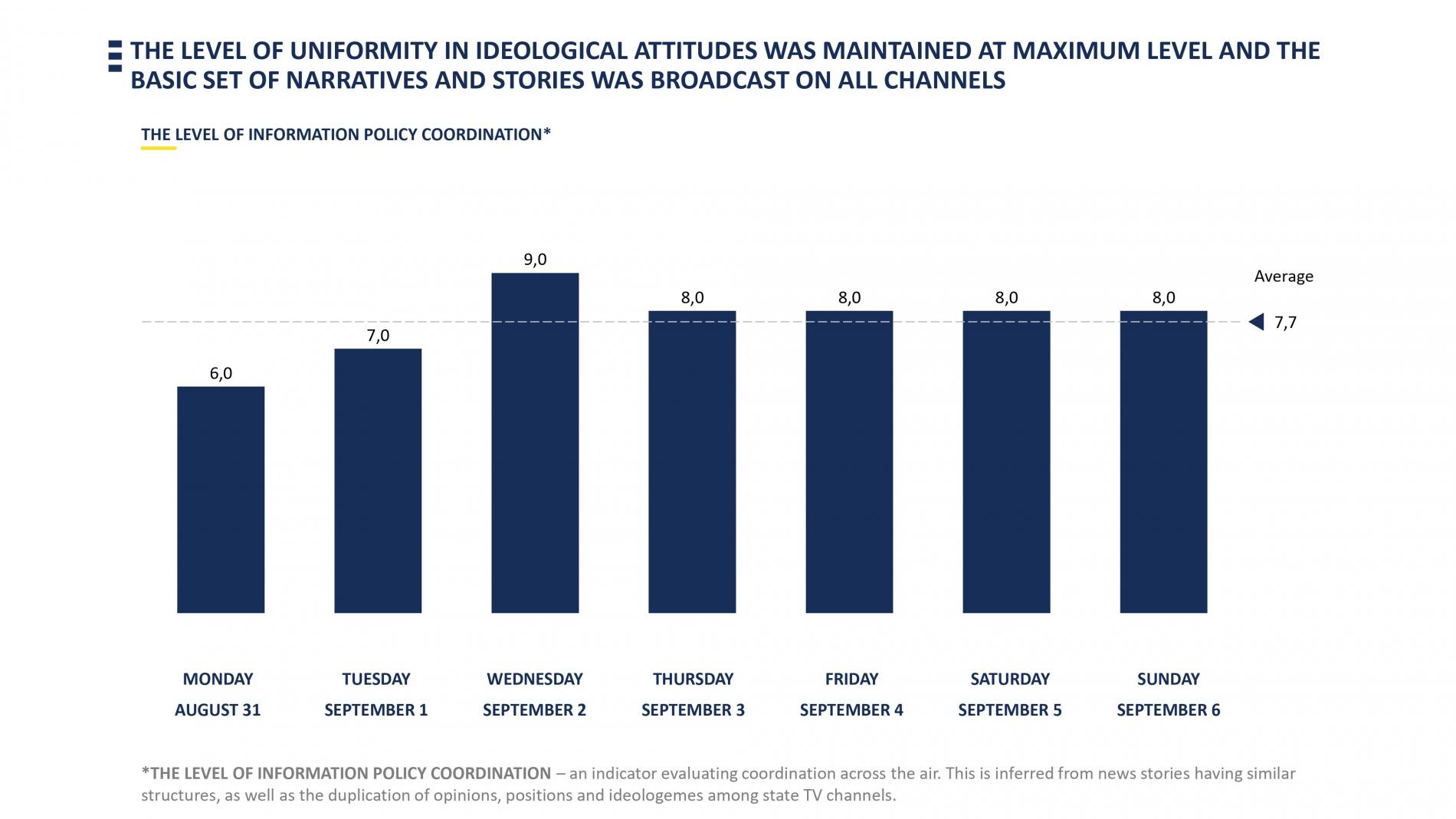
The author of the weekly reports is Maxim Stefanovich, the editor and coordinator of the project is Artyom Shraibman.
To see the full version of the report in Russian click here.
